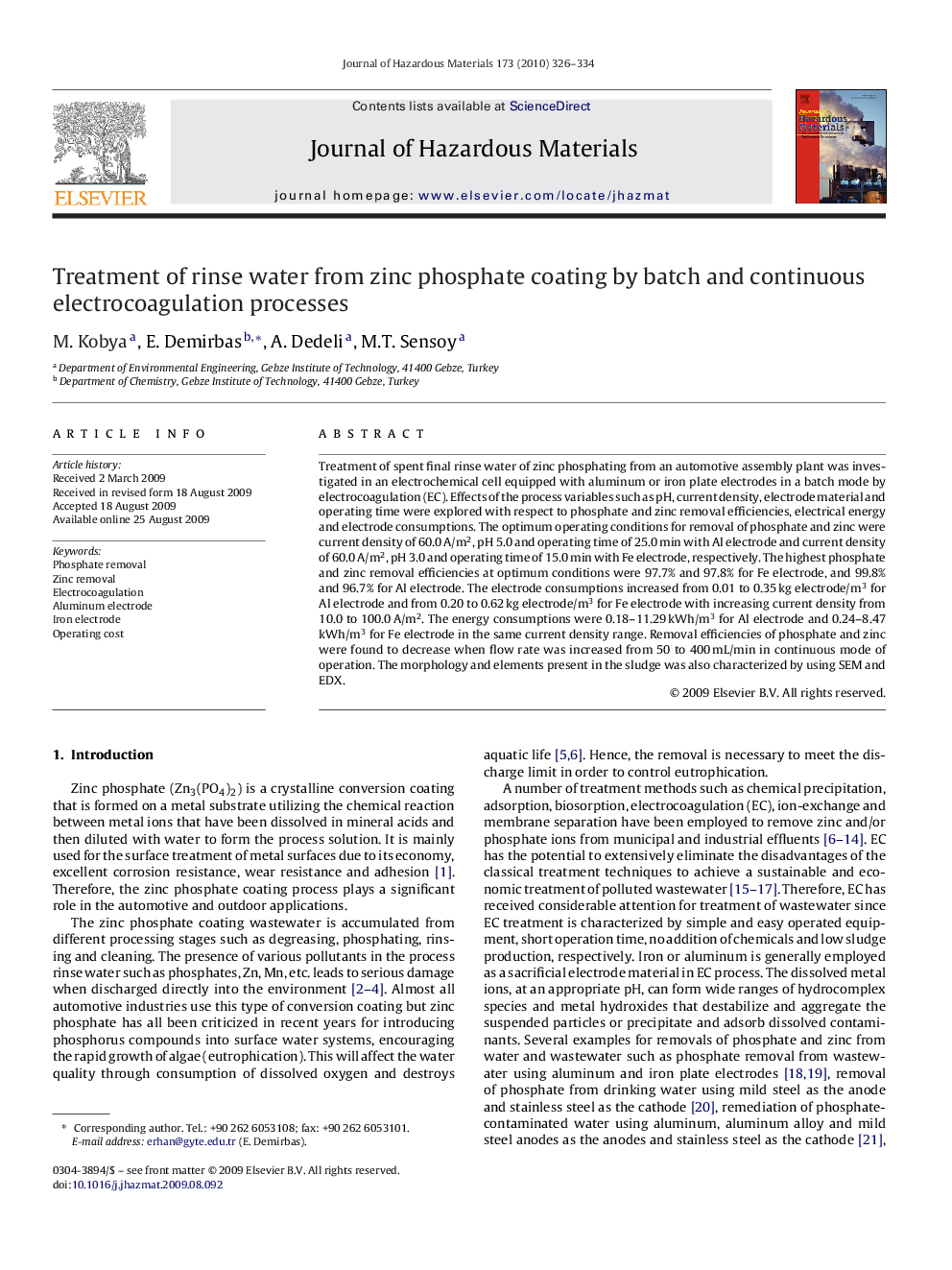| Article ID | Journal | Published Year | Pages | File Type |
|---|---|---|---|---|
| 580972 | Journal of Hazardous Materials | 2010 | 9 Pages |
Abstract
Treatment of spent final rinse water of zinc phosphating from an automotive assembly plant was investigated in an electrochemical cell equipped with aluminum or iron plate electrodes in a batch mode by electrocoagulation (EC). Effects of the process variables such as pH, current density, electrode material and operating time were explored with respect to phosphate and zinc removal efficiencies, electrical energy and electrode consumptions. The optimum operating conditions for removal of phosphate and zinc were current density of 60.0Â A/m2, pH 5.0 and operating time of 25.0Â min with Al electrode and current density of 60.0Â A/m2, pH 3.0 and operating time of 15.0Â min with Fe electrode, respectively. The highest phosphate and zinc removal efficiencies at optimum conditions were 97.7% and 97.8% for Fe electrode, and 99.8% and 96.7% for Al electrode. The electrode consumptions increased from 0.01 to 0.35Â kg electrode/m3 for Al electrode and from 0.20 to 0.62Â kg electrode/m3 for Fe electrode with increasing current density from 10.0 to 100.0Â A/m2. The energy consumptions were 0.18-11.29Â kWh/m3 for Al electrode and 0.24-8.47 kWh/m3 for Fe electrode in the same current density range. Removal efficiencies of phosphate and zinc were found to decrease when flow rate was increased from 50 to 400Â mL/min in continuous mode of operation. The morphology and elements present in the sludge was also characterized by using SEM and EDX.
Keywords
Related Topics
Physical Sciences and Engineering
Chemical Engineering
Chemical Health and Safety
Authors
M. Kobya, E. Demirbas, A. Dedeli, M.T. Sensoy,
